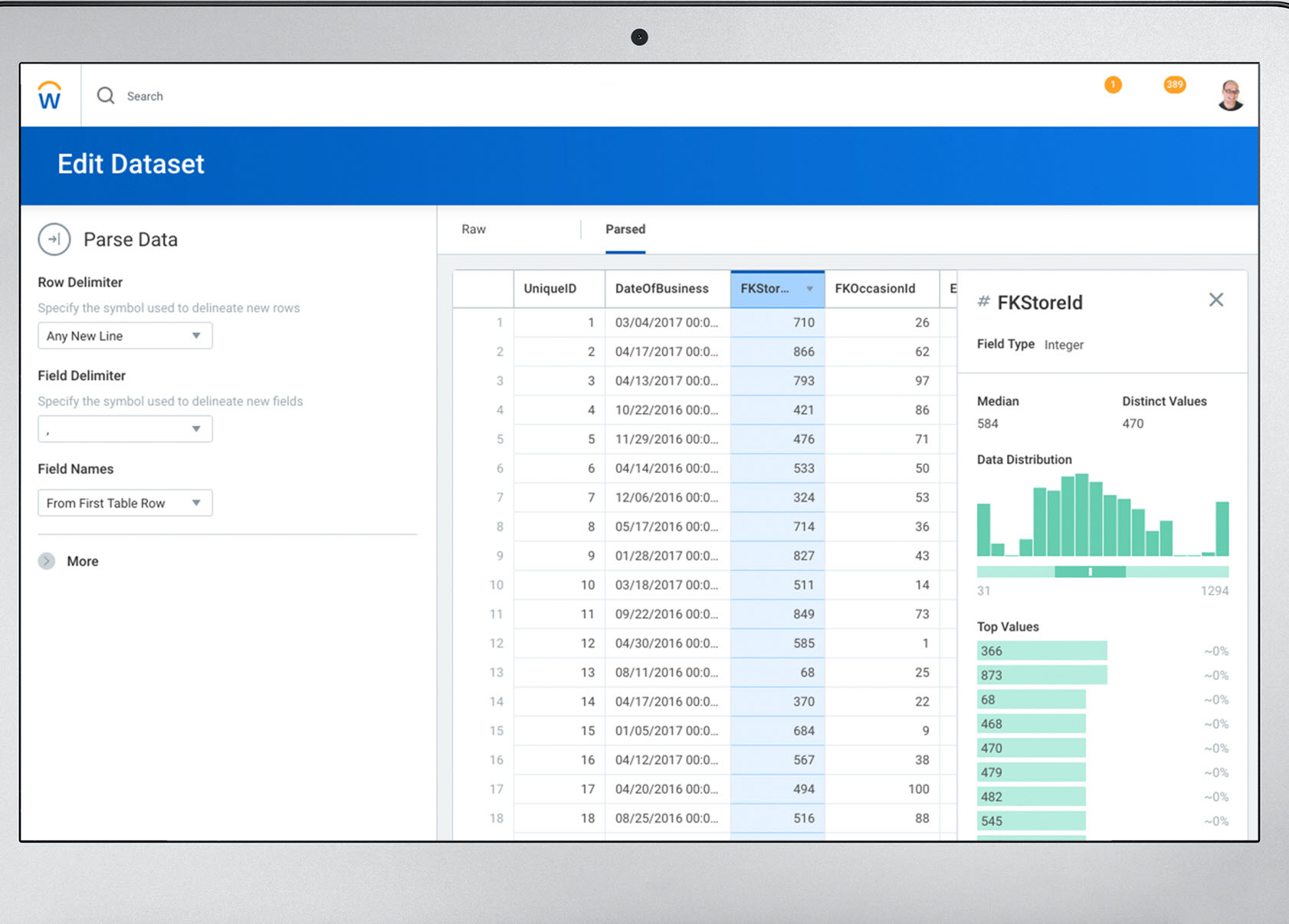 CLOUD
CLOUD
 CLOUD
CLOUD
 CLOUD
CLOUD
The fruits of Workday Inc.‘s 2016 acquisition of business intelligence startup Platfora Inc. will become clearer to customers today as the financial and human capital management software vendor introduces a suite of analytical features that synch up closely with its core products.
Workday is also announcing general availability of a cloud benchmark service that provides customers with metrics collected from other customers that can help them understand their company’s relative performance.
Workday Prism Analytics enables customers to combine Workday and external data in a single console that the company says was co-designed with several of its largest customers. This replaces the typically lengthy and error-prone data extraction, cleansing and integration process with an in-line experience that works directly on production Workday data. Integrated metrics provide views of factors like attrition rates, financial forecasts, worker productivity and revenue analysis, with drill-down and cross-segment viewing capability.
While many organizations already have business intelligence software in place, “Customers told us they wanted to do analysis inside of Workday,” said Pete Schlampp, vice president of Workday Analytics. “This puts together [extract/transform/load], data warehousing and business intelligence to replace the need for that separate software.” Workday had limited reporting and visualization tools in the past, which meant customers had to rely principally on third-party BI tools.
Schlampp emphasized that Workday is not entering the general BI market or trying to displace existing tools. “This is not a stand-alone analytics product you’d use if you didn’t have Workday HCM and financials, but we’d expect those customers to use it as their primary analytics tool,” he said.
Platfora, which was originally designed for data scientists, was known for its data integration and transformation tools. Those features will be retained to make it easier for Workday analytics to coexist with other tools, Schlampp said. “We have a very robust set of integration capabilities, which includes data in and data out and a visual studio to build integrations,” he said.
One of the advantages of the integrated approach is built-in governance, the company said. Because the analytics are designed specifically for a Workday environment, views and access controls inherit the rules already established within Workday.
“The Workday security framework secures all data down to the level of the record by who you are and the organization where you work,” he said. “If managers have just joined the company, we will instantly give them analytics access to data about the group that they manage.”
Access can also be multi-dimensional, meaning that a manager can see information only about employees who work in certain stores in a region within an organization. If the store moves elsewhere in the organization, so do the permissions and reports.
Customers can load and synchronize data from external sources and store it securely in the Workday cloud, where it can be searched, navigated and viewed in a shared and secure data catalog, the company said. Users can distribute reports to others from the browser or mobile device via Workday’s dashboards, scorecards, reports and worksheets, which are spreadsheets with embedded sharing and commenting features.
In the future, Workday also intends to build in data discovery features to enable users to navigate data and build reports visually. Workday Prism Analytics is a separately priced Workday component, but the company did not reveal pricing details.
The new benchmarking service works with live data drawn from Workday’s 1,800 customer organizations and the 26 million people who work for them. Participation is on an opt-in basis. Once customers decide to participate and select the data to contribute, their data is anonymized and added to a secure, aggregated dataset.
In return, they get access to benchmarks representing other participating customers to see how they compare against similar demographics such as industry or company size. Benchmark data is presented as part of the Workday dashboard.
Benchmarks cover workforce demographics, turnover and retention, leadership effectiveness and Workday usage. A future release will add financial benchmarks such as core revenue growth and return on invested capital so that financial executives can compare revenue per employee against similar companies, then model against project staffing needs. The service is being bundled into the base subscription at no additional cost.
THANK YOU